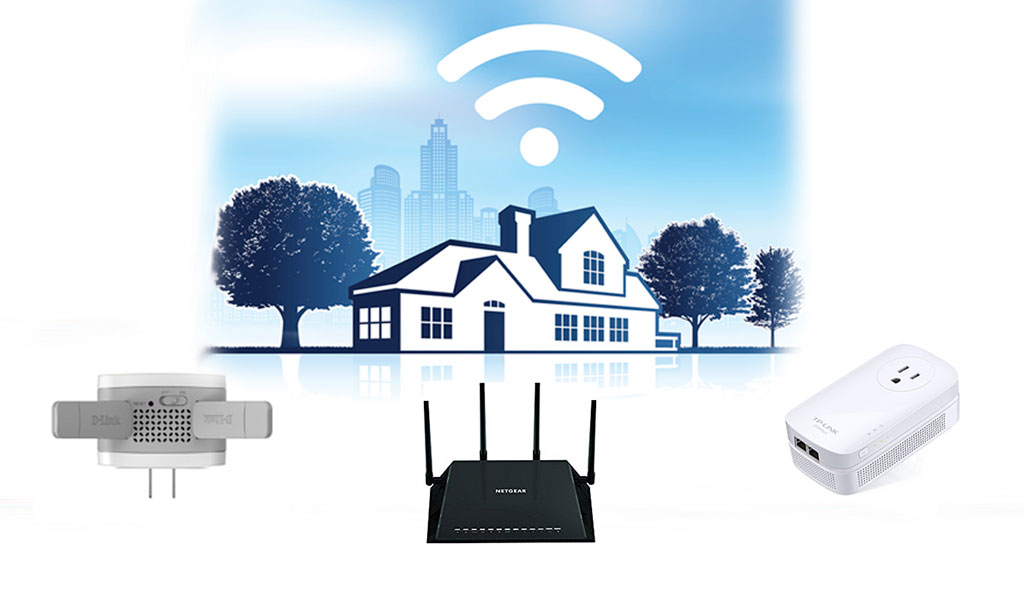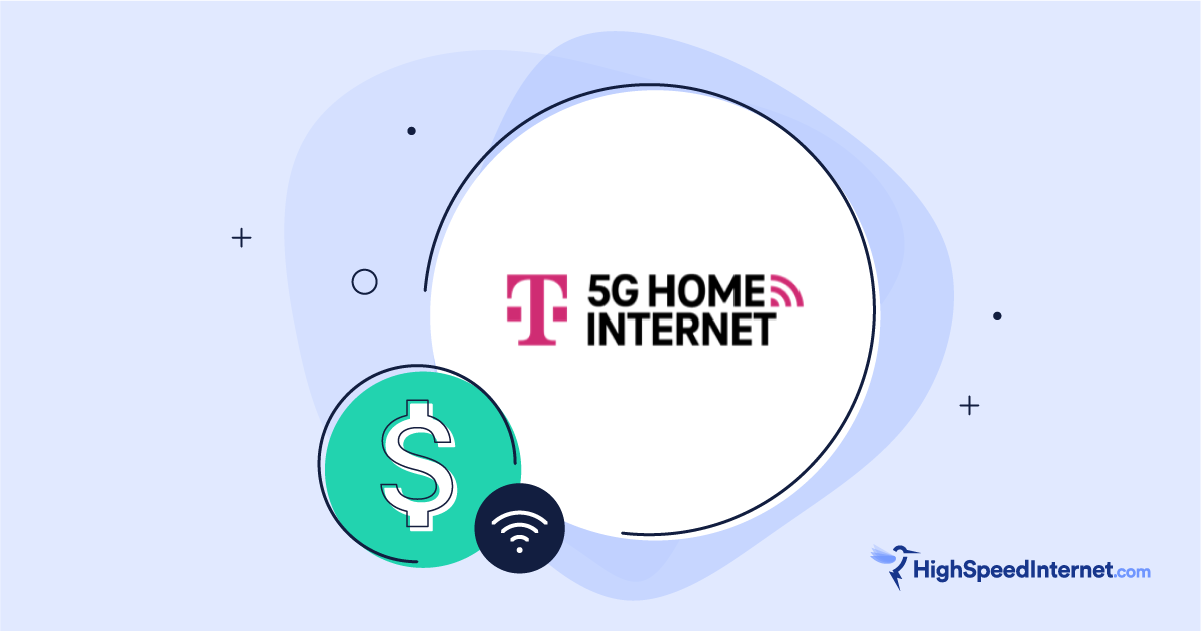How To Choose a Great Mobile Bundle
Find reliable internet service and then compare mobile pricing
Apr 15, 2025 | Share
How-To
You might save money by bundling your home internet and mobile phone bills with the same provider. You may also simplify your billing and get sweet perks like free phones and boosted speeds when you connect your phone to your provider’s Wi-Fi.
You won’t necessarily be able to combine the bills, though, and you should read the fine print carefully. Promotional rates expire, and deals change often.
We’ll cover how mobile bundles work. Then, we’ll give you a roadmap for deciding whether one is right for you.
In this guide:
Starting with internet | Starting with mobile | Choosing a bundle | My take
In this guide:
Internet bundles from mobile providers
Bundle packages from Verizon, AT&T, and T-Mobile are different because these companies are top-tier mobile phone providers that also offer internet service. That means elite phone service, plus more plan options and perks like streaming discounts and deals on devices. You also usually get more mobile data with plans from these providers.
Among these, only AT&T has a public hotspot network worth its salt, and it offers tons of priority data to mobile customers.
With any of the big three phone companies, you’ll have a great connection whether or not you’re on Wi-Fi.
Mobile bundles from internet providers
If you have an internet service you love, you can likely get mobile phone service from the same provider. That’s true with big cable companies like Spectrum, Xfinity, and Optimum. Each offers special deals like a year of free mobile service or two lines for the price of one. Each also offers a robust network of Wi-Fi hotspots, meaning you can save on mobile data while enjoying lightning-fast speeds while you’re out and about.
However, you may not be able to use your own phone as a hotspot as often and may not get as many deals on phone upgrades as you would with a top-tier mobile phone provider.
The cable internet providers mentioned above are mobile virtual network operators (MVNOs) of big companies like Verizon or T-Mobile, so you also enjoy premium data and 5G cellular coverage when you aren’t connected to Wi-Fi.
Looking for a bundle deal?
Looking for an internet provider that also offers mobile phone plans? Run a search with your zip code to see what’s available in your area.
Customer survey: Customers are keen on mobile bundles
Customers love bundling their home internet with a mobile plan, they told us in our annual Customer Satisfaction Survey. It’s so popular, in fact, that one out of every five customers we asked chooses a bundle deal.
TV bundles used to be the big thing in internet service, and 44% of customers still bundle TV and internet. However, those numbers are falling with the rise of streaming services. If you get a bundle, make it for a mobile phone plan.
How to choose internet and mobile bundles
First, find a great internet service by shopping for providers near you. The best plans have speeds of at least 250Mbps and cost about $50 per month, but you’ll be limited based on where you live.
Then, compare mobile phone options from your new internet provider with your current mobile phone plan and plans from other providers. We’ll go into the specifics below, but I generally recommend plans with unlimited data (or at least 10GB of priority data) and single-line prices in the range of $30 to $50 per month. You’re more likely to find that with MVNO carriers than with the big three carriers (T-Mobile, AT&T, and Verizon), but in my experience, you won’t see big differences in call quality or mobile speeds by moving away from the big brand names.
Pro tip: Your patience will be rewarded
I’ll give it to you straight—finding the right mobile service is a hassle, and it’s frustrating. Prepare to be patient, and remind yourself that you can save a lot of money if you get it right.
In addition to price and mobile data, here are some other things to keep in mind when shopping for mobile phone service.
Ask about signal quality
Coverage is the most important factor when choosing a mobile phone service. The best way to know if a particular provider is any good is to ask local friends and neighbors about their experiences. If you can’t, though, here are some rules of thumb:
- T-Mobile and its MVNOs have the fastest coverage in cities and suburbs, with the best nationwide 5G network. Google Fi and Optimum Mobile use the T-Mobile network.
- Verizon and its MVNOs have the best coverage in rural areas. Xfinity Mobile and Spectrum Mobile are two of its biggest virtual operators.
- AT&T and its virtual operators have decent coverage in rural areas and superfast coverage in certain crowded metro areas. Its MVNOs don’t typically double as internet service providers, but AT&T has the biggest fiber internet network in the country.
Save data with free Wi-Fi hotspots
You need some mobile data every month to browse, stream, and use apps when you can’t connect to Wi-Fi. However, some providers have huge Wi-Fi networks you can rely on to save on monthly data. Our top picks are Xfinity, Spectrum, AT&T, and Optimum. If you choose a plan from one of these providers, you’ll probably only need 5–10GB of mobile priority data per month.
If you don’t have a provider with a big public hotspot network and spend a lot of time not connected to Wi-Fi, you could blow through 20GB of priority data per month (or even more). If slow speeds are out of the question, look for plans with unlimited data.
Get deals on devices
You get the best deals on new devices by sticking with the big three carriers, but you might pay for it long-term through increased monthly prices. However, remember that your new device will be locked to your carrier’s network until it’s paid off (or you’ve been with the carrier for so long that bill credits pay it off). If you go with an MVNO, on the other hand, you will likely have fewer devices to choose from and less frequent upgrades, and you may still have to deal with shenanigans like device credits.
There are no easy answers here, but think carefully about the state of your current phones and tablets, figure out the true costs of replacing them, and decide whether you’re comfortable buying a phone on an installment plan.
Save with family plans
You can usually pay less per mobile line when you have multiple lines on an account. As you shop, remember to look for single-line prices (if that’s what you need) or compare multi-line prices apples to apples.
Consider mobile hotspot data
In addition to needing a certain amount of mobile data for your phone, you might need to use your phone’s internet connection to connect other devices, such as a laptop or tablet. Some folks call this “tethering,” while others call it using your phone as a “mobile hotspot.” Confusing, right?
Whatever you call it, try to figure out how much mobile hotspot data you need when shopping for a mobile phone plan. Generally speaking, the big three carriers offer more mobile hotspot data than their MVNOs.
Don’t forget tablets and smartwatches
You will need to pay for the privilege of connecting tablets or smartwatches to mobile networks. It’s fairly easy with the big three mobile phone companies, but you may run into trouble if you want to connect additional devices to MVNO plans. Figure out what you need before you start shopping.
My take: Is bundling home and internet service a good idea?
Bundling home and internet service is a good idea if you can get a good deal on both services, but you should consider internet service first. I always recommend fiber internet if you can get it, but cable internet is decent if there’s no fiber where you live. Fixed wireless internet is the next best option, followed by DSL and then satellite internet. From there, find out which bundles your internet provider offers and see if you can save money compared to going with another mobile phone company.
Lucky for you, there’s more competition among mobile phone companies among internet companies, so you have more choices. If you don’t know where to begin, ask your neighbors about their coverage. Once you know which network is best in your area, decide if you need a new smartphone. Then, compare plans and device prices from your network of choice and its virtual operators.
Personally, I go with municipal fiber internet because it’s the best option in my area, and I own my smartphone outright. That lets me get away with a $20 monthly bill from a T-Mobile MVNO, and it’s just right—I rarely use more than 5GB of mobile data per month, and I am almost never left wanting for faster speeds.
Author - Chili Palmer
Chili Palmer covers home tech services, with a special focus on understanding what families need and how they can stay connected on a budget. She handles internet access and affordability, breaking news, mobile services, and consumer trends. Chili’s work as a writer, reporter, and editor has appeared in publications including Telecompetitor, Utah Business, Idaho Business Review, Benton Institute for Broadband & Society, and Switchful.com.
Editor - Jessica Brooksby
Jessica loves bringing her passion for the written word and her love of tech into one space at HighSpeedInternet.com. She works with the team’s writers to revise strong, user-focused content so every reader can find the tech that works for them. Jessica has a bachelor’s degree in English from Utah Valley University and seven years of creative and editorial experience. Outside of work, she spends her time gaming, reading, painting, and buying an excessive amount of Legend of Zelda merchandise.




